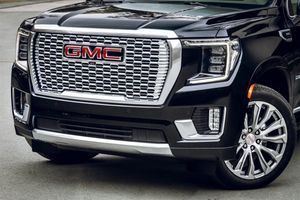Rear-end collisions continue to represent a significant portion of traffic accidents throughout Missouri, with these incidents accounting for approximately 30% of all vehicle collisions nationwide annually. Legal experts are highlighting significant misconceptions about fault determination in these cases, as Missouri's legal framework includes nuanced provisions that often surprise drivers who assume the rear vehicle is automatically responsible for all damages.
Missouri operates under the rear-end collision doctrine, which creates a legal presumption that the driver who strikes a vehicle from behind bears responsibility for the accident. This presumption stems from Missouri Revised Statutes § 304.012, which requires drivers to maintain sufficient space from the car in front to avoid collisions, making failure to do so a form of negligence under state law.
However, this presumption can be rebutted in various circumstances, a fact that many Missouri drivers do not fully understand. The legal framework recognizes that rear-end collisions can result from actions by the lead driver or external circumstances beyond the rear driver's control, creating opportunities for more complex fault determinations than commonly assumed.
Several scenarios can shift liability away from the rear driver or create situations where fault is shared. When lead drivers engage in brake-checking behavior, stopping abruptly without a valid reason to intimidate or harass following vehicles, they may bear primary responsibility for resulting collisions. Similarly, malfunctioning brake lights that fail to warn following drivers of deceleration can shift liability to the lead vehicle's owner.
Unsafe lane changes represent another typical exception to rear driver fault. When drivers merge improperly or change lanes without sufficient space, creating unavoidable collision scenarios for following vehicles, the merging driver may bear primary responsibility. Unexpected maneuvers, such as sudden reversing without warning, can also shift fault to the lead driver.
External forces beyond either driver's control can complicate fault determinations significantly. Multi-vehicle chain reaction accidents, where one vehicle is pushed into another by a third vehicle's impact, require careful analysis to determine primary causation. Sudden emergencies, such as children running into roadways or debris falling from other vehicles, may excuse rear driver actions that would otherwise constitute negligence.
Missouri's pure comparative fault system adds another layer of complexity to rear-end collision cases. Unlike states that bar recovery if a plaintiff bears any responsibility for an accident, Missouri allows compensation even when victims share fault, reducing awards proportionally to their degree of responsibility. This framework means that even drivers who contributed to their accidents may recover damages, albeit at reduced amounts.
The comparative fault system particularly impacts rear-end collision cases where both drivers bear some responsibility. Lead drivers who stop suddenly without warning while rear drivers follow too closely may both contribute to collision causation, resulting in shared liability determinations that affect compensation calculations.
"The common assumption that rear drivers automatically bear full responsibility for these accidents often prevents victims from understanding their actual legal rights under Missouri law," said a senior attorney familiar with rear-end collision cases. "The state's comparative fault system and various exceptions to the rear-end collision doctrine create opportunities for fair compensation that many accident victims never explore because they assume they have no viable claims."
Evidence collection plays a crucial role in determining fault in rear-end collision cases, particularly when challenging the presumption of rear driver responsibility. Dashcam footage can provide objective documentation of pre-collision circumstances, while vehicle black box data may reveal critical information about speeds, braking patterns, and impact forces.
Police reports, while important, may not capture all relevant circumstances surrounding rear-end collisions. Officers arriving after accidents must reconstruct events based on physical evidence and driver statements, potentially missing crucial details about lead driver actions or external factors that contributed to collisions.
Witness statements can prove particularly valuable when challenging rear driver fault presumptions. Independent observers may have seen brake-checking behavior, sudden lane changes, or equipment malfunctions that drivers involved in accidents might not fully appreciate or remember accurately.
Medical attention following rear-end collisions becomes essential even when injuries appear minor initially. Whiplash and other soft tissue injuries commonly associated with these accidents may not manifest symptoms immediately, with pain and mobility issues developing hours or days after impact. Delayed medical treatment can complicate both injury recovery and legal proceedings.
Documentation protocols following rear-end collisions should include comprehensive photography of vehicle damage, accident scenes, and any relevant road conditions or signage. Exchange of insurance and contact information remains essential, along with notation of any statements made by other drivers about accident circumstances.
Missouri's five-year statute of limitations for personal injury lawsuits provides substantial time for accident victims to pursue legal remedies, but prompt action often improves case outcomes. Evidence preservation, witness availability, and medical documentation typically become more challenging as time passes following accidents.
For victims of rear-end collisions throughout Missouri, understanding the state's comparative fault system and exceptions to standard liability presumptions can significantly impact compensation opportunities. Missouri Injury Law Firm provides specialized representation for rear-end collision cases, helping clients navigate the complexities of fault determination and maximize recovery under Missouri's legal framework.
###
For more information about Missouri Injury Law Firm, contact the company here:
Missouri Injury Law Firm
Gene Hou
(636) 333-1717
help@injurylawyers-stlouis.com
1444 Gravois Rd, High Ridge, MO 63049, USA






